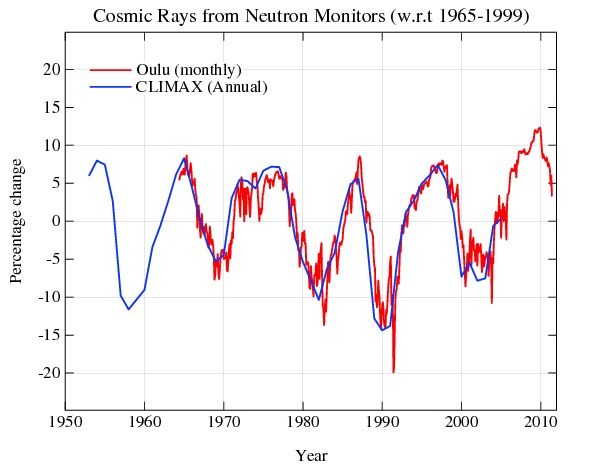- Joined
- Jan 28, 2013
- Messages
- 94,823
- Reaction score
- 28,342
- Location
- Williamsburg, Virginia
- Gender
- Male
- Political Leaning
- Independent
The revolution in climate science may be faintly visible now. Cloud formation is front and center, and Svensmark's ideas are the foundation of the research.
". . . There are some interesting results here in terms of confirming Svensmark’s ideas, and the experiments (both laboratory and in nature) seem to be well conceived and executed. . . "
The cloud-climate conundrum
Posted on June 2, 2016 | 95 comments
by Judith Curry
Four new papers remind us of the very large uncertainties surrounding cloud-climate feedbacks.
Continue reading →
CERN’s CLOUD Experiment recently published three new papers:
Clouds need to condense around small particles called aerosols to form, and human aerosol pollution—primarily in the form of sulfuric acid—has made for cloudier skies. That’s why scientists have generally assumed Earth’s ancient skies were much sunnier than they are now. But today, three new studies show how naturally emitted gases from trees can also form the seed particles for clouds. The results not only point to a cloudier past, but they also indicate a potentially cooler future: If Earth’s climate is less sensitive to rising carbon dioxide (CO2) levels, as the study suggests, future temperatures may not rise as quickly as predicted. . . .
Nature News also has an article on the papers: Cloud-seeding surprise could improve climate predictions. Excerpts: . . .
". . . There are some interesting results here in terms of confirming Svensmark’s ideas, and the experiments (both laboratory and in nature) seem to be well conceived and executed. . . "
The cloud-climate conundrum
Posted on June 2, 2016 | 95 comments
by Judith Curry
Four new papers remind us of the very large uncertainties surrounding cloud-climate feedbacks.
Continue reading →
CERN’s CLOUD Experiment recently published three new papers:
- Ion induced nucleation of pure biogenic particles
- The role of low-volatility organic compounds in initial particle growth in the atmosphere
- New particle formation in the free troposphere: A question of chemistry and timing.
Clouds need to condense around small particles called aerosols to form, and human aerosol pollution—primarily in the form of sulfuric acid—has made for cloudier skies. That’s why scientists have generally assumed Earth’s ancient skies were much sunnier than they are now. But today, three new studies show how naturally emitted gases from trees can also form the seed particles for clouds. The results not only point to a cloudier past, but they also indicate a potentially cooler future: If Earth’s climate is less sensitive to rising carbon dioxide (CO2) levels, as the study suggests, future temperatures may not rise as quickly as predicted. . . .
Nature News also has an article on the papers: Cloud-seeding surprise could improve climate predictions. Excerpts: . . .


